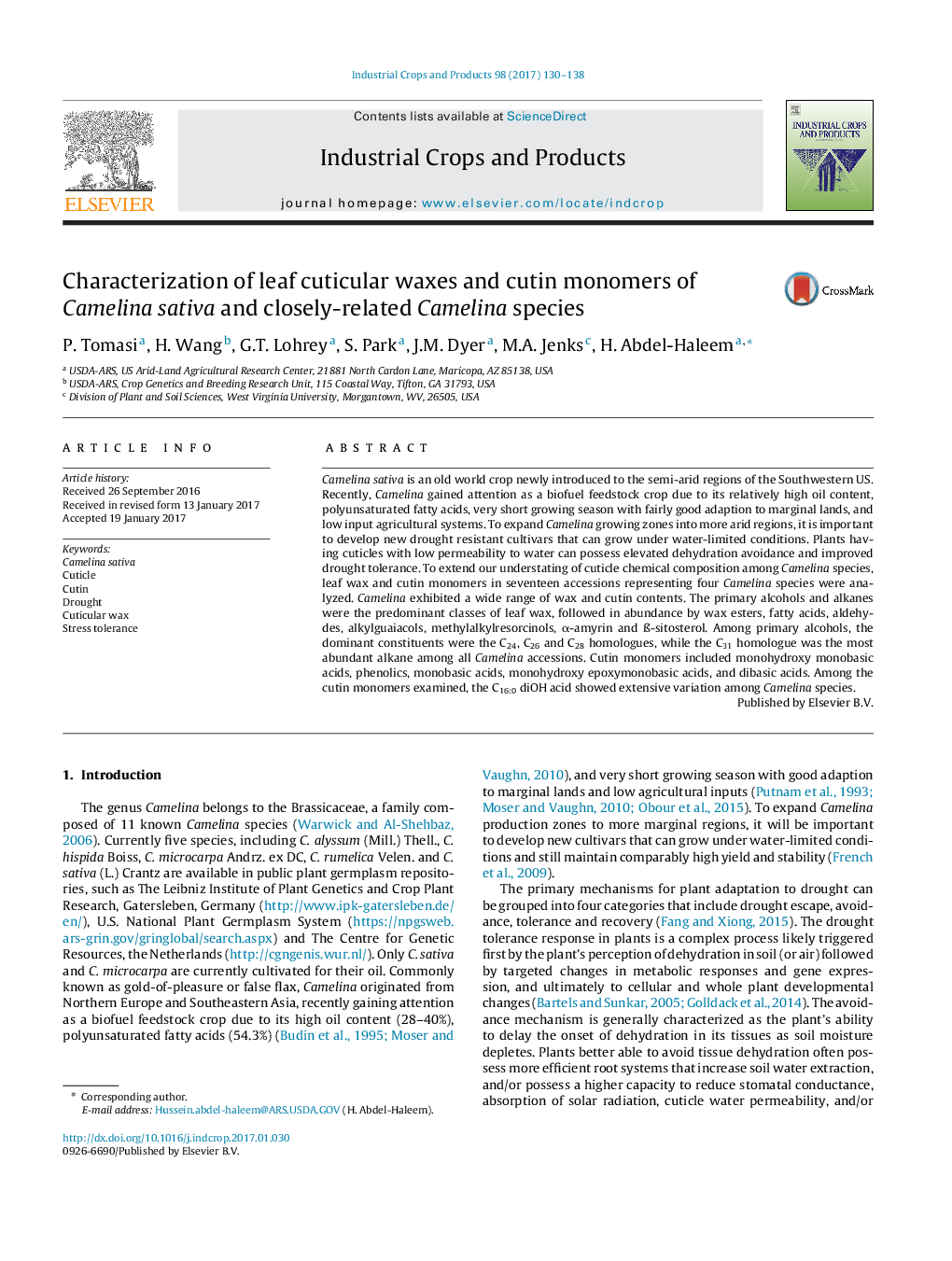| Article ID | Journal | Published Year | Pages | File Type |
|---|---|---|---|---|
| 5762214 | Industrial Crops and Products | 2017 | 9 Pages |
Abstract
Camelina sativa is an old world crop newly introduced to the semi-arid regions of the Southwestern US. Recently, Camelina gained attention as a biofuel feedstock crop due to its relatively high oil content, polyunsaturated fatty acids, very short growing season with fairly good adaption to marginal lands, and low input agricultural systems. To expand Camelina growing zones into more arid regions, it is important to develop new drought resistant cultivars that can grow under water-limited conditions. Plants having cuticles with low permeability to water can possess elevated dehydration avoidance and improved drought tolerance. To extend our understating of cuticle chemical composition among Camelina species, leaf wax and cutin monomers in seventeen accessions representing four Camelina species were analyzed. Camelina exhibited a wide range of wax and cutin contents. The primary alcohols and alkanes were the predominant classes of leaf wax, followed in abundance by wax esters, fatty acids, aldehydes, alkylguaiacols, methylalkylresorcinols, α-amyrin and Ã-sitosterol. Among primary alcohols, the dominant constituents were the C24, C26 and C28 homologues, while the C31 homologue was the most abundant alkane among all Camelina accessions. Cutin monomers included monohydroxy monobasic acids, phenolics, monobasic acids, monohydroxy epoxymonobasic acids, and dibasic acids. Among the cutin monomers examined, the C16:0 diOH acid showed extensive variation among Camelina species.
Related Topics
Life Sciences
Agricultural and Biological Sciences
Agronomy and Crop Science
Authors
P. Tomasi, H. Wang, G.T. Lohrey, S. Park, J.M. Dyer, M.A. Jenks, H. Abdel-Haleem,
